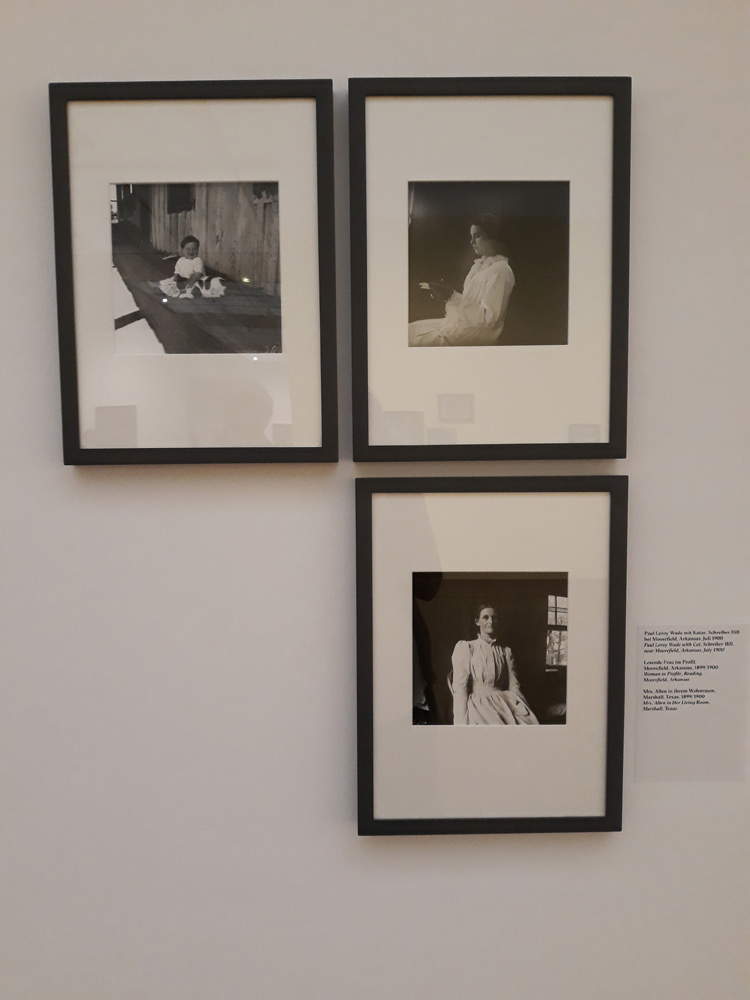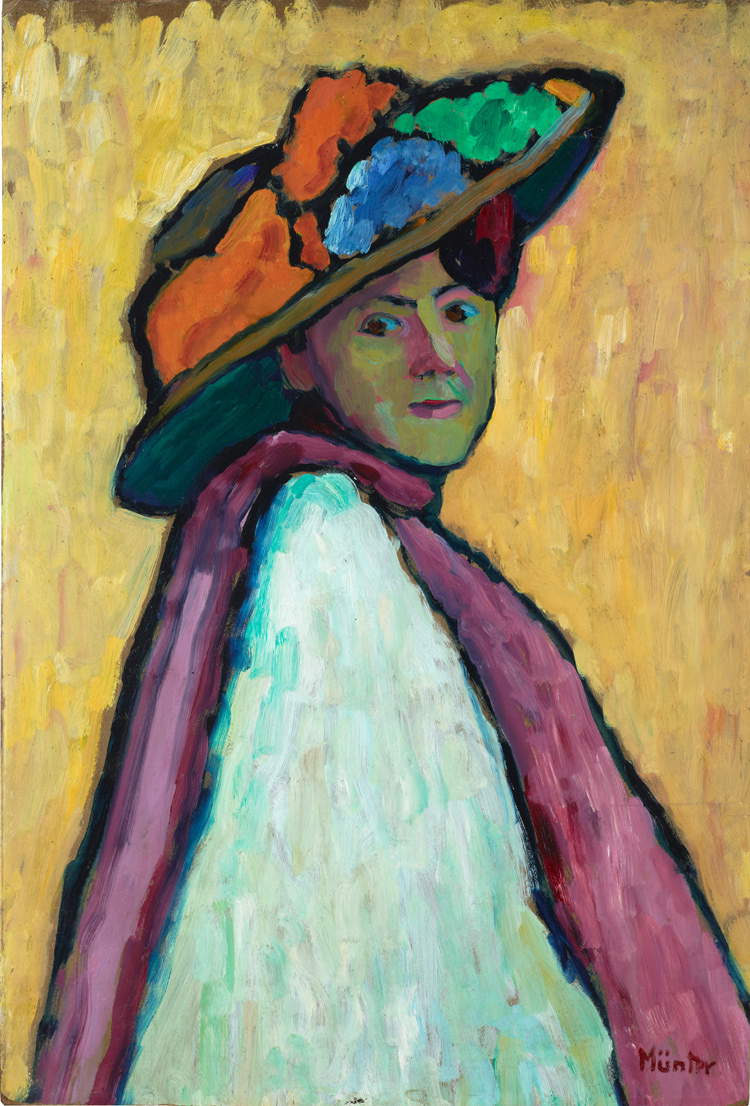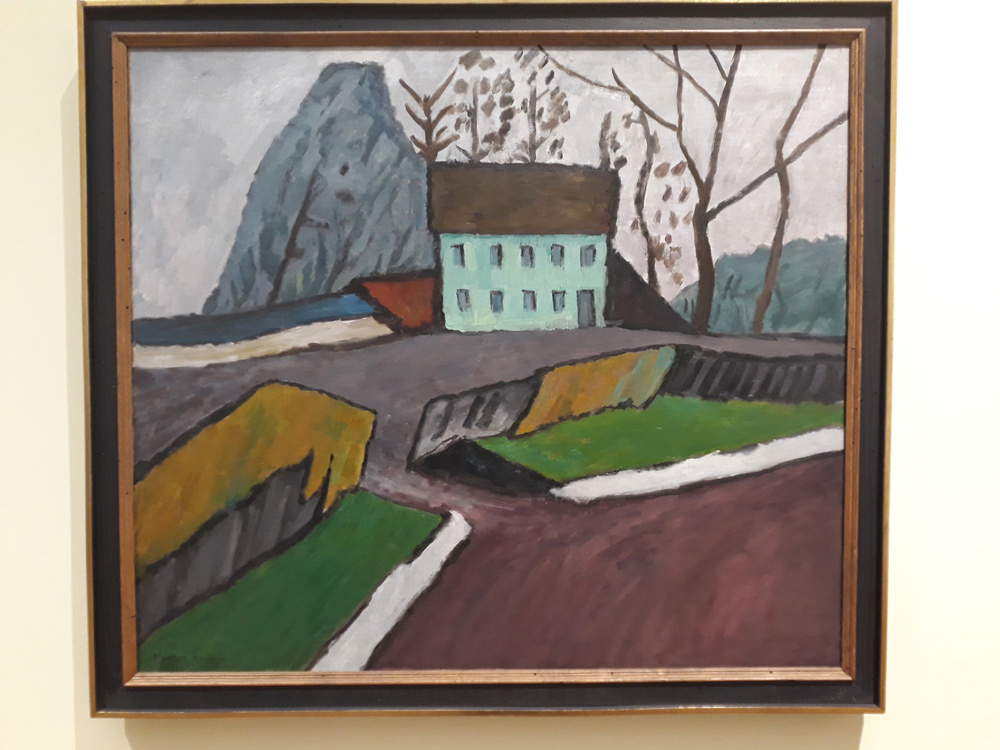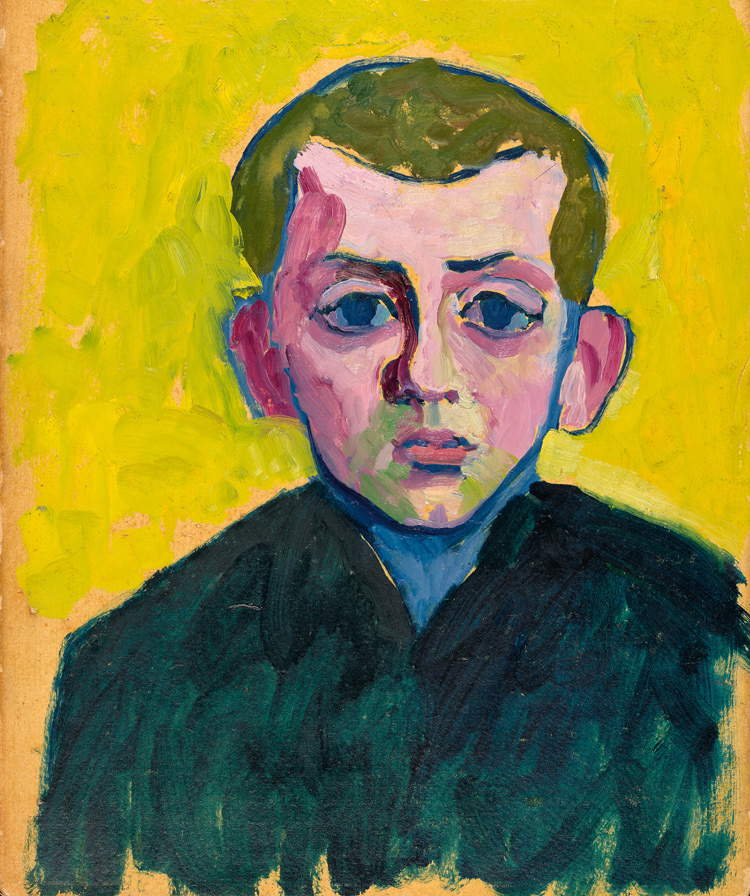Gabriele Münter (Berlin, 1877 - Murnau, 1962) is best known to most for being the fellow painter of Vasily Kandinsky (Moscow, 1866 - Neuilly-Sur-Seine, 1944) and co-founder of the expressionist group The Blue Rider. The exhibition Gabriele Münter: Painting to the Point, which opened on September 14 at one of Europe’s most important contemporary art museums, the Museum Ludwig in Cologne, aims to untether her figure from that of Kandinsky and to demonstrate Gabriele Münter’s importance and independence as a painter.
Retrospectives and solo exhibitions of women artists past and present, organized by museums and galleries, are still too few: this Cologne exhibition, therefore, has even greater importance, especially considering that, in the past twenty-five years, there have been three exhibitions dedicated to Gabriele Münter and all of them organized at the Lenbachhaus in Munich, also home to the Gabriele Münter und Johannes Eichner Stiftung.
Münter’s fruitful activity produced some two thousand paintings, hundreds of drawings, watercolors, prints, and no less than one thousand two hundred photographs, and of these works as many as one hundred and thirty-two paintings are on view in the exhibition, thanks in part to important international loans, such as those from the Des Moines Art Center in Iowa, the Centre Pompidou in Paris, and the Israel Museum in Jerusalem. Paradoxically, it is precisely the Ludwig, which within its permanent collection has several works by the expressionist artists belonging to The Blue Knight, that does not possess any of Münter’s works. On the occasion of the exhibition, the museum acquired one of her early works, Knabenkopf (Willi Blab) from 1908, thus demonstrating its intention to expand its acquisitions to include ’women’s art.
 |
| Exhibition hall of the exhibition Gabriele Münter: Painting to the Point, Museum Ludwig, Cologne 2018 © VG Bild-Kunst, Bonn 2018 Ph. Credit: Rheinisches Bildarchiv Köln / Jonas Klein |
 |
| Exhibition hall of the exhibition Gabriele Münter: Painting to the Point, Museum Ludwig, Cologne 2018 © VG Bild-Kunst, Bonn 2018 Ph. Credit: Rheinisches Bildarchiv Köln / Jonas Klein |
 |
| Exhibition layouts Gabriele Münter: Painting to the Point, Museum Ludwig, Cologne 2018. Ph. Credit Francesca Della Ventura |
The exhibition was organized by the Städtische Galerie of Lenbachhaus and Kunstbau in Munich, and the Gabriele Münter and Johannes Eichner Foundation in cooperation with the Louisiana Museum of Modern Art in Humlebæk and Museum Ludwig in Cologne, where the exhibition curator is Rita Kersting, deputy director of the museum. The focal point of the exhibition itinerary and of the painter’s own life is the city of Munich, where Münter at the age of 24 began her training as an artist and where, at the “Phalank-Schule Kandinsky,” she met the one who would be her emotional and working partner, Vasily Kandinsky, with whom she founded the expressionist movement of The Blue Rider in 1911. This is who Gabriele Münter was: a modern, emancipated woman who lived in several countries and spoke multiple foreign languages, such as English, French, Danish and Swedish.
The exhibition, divided into ten thematic and chronological sections, opens with her very first activity as a photographer, which is little known and the most interesting from an exhibition perspective. In 1898, at the age of twenty-one, Gabriele Münter made a trip to North America lasting about two years. On the occasion of the trip and to document it, he took a total of about four hundred photographs with his Kodak Bull’s Eye No. 2, effectively marking the beginning of his artistic career. Landscapes, portraits, interiors, work and technology were the themes that most inspired her, first in photography, then in painting. Münter, who was particularly introduced to the most significant artistic circles of the time, managed to forge working relationships and friendships with important figures, such as the art dealer Herwarth Walden, the painters Kandinsky, Werefkin, Jawlensky, Marc, Macke, and the American art historian Hans Konrad Roethel, who became director of the Lenbachhaus in Munich in 1956.
 |
| Gabriele Münter, photographs from America, 1899-1900. Ph. Credit Francesca Della Ventura |
 |
| Gabriele Münter, Portrait of Marianne von Werefkin (1909; cardboard, 81 x 54.8 cm; Munich, Städtische Galerie im Lenbachhaus und Kunstbau) © VG Bild-Kunst, Bonn 2018. Ph. Credit Städtische Galerie im Lenbachhaus und Kunstbau München |
 |
| Gabriele Münter, House in Schwabing (1911; oil on canvas, 88.3 x 100.3 cm). Ph. Credit Francesca Della Ventura |
 |
| Gabriele Münter, Miss Ellen on the Grass (1934; fabric on pictorial support, 47.5 x 65 cm). Ph. Credit Francesca Della Ventura |
 |
| Gabriele Münter, Knabenkopf (Willi Blab) (1908; cardboard, 39.8 x 33.1 cm; Munich, Gabriele Münter-und Johannes Eichner-Stiftung) © VG Bild-Kunst, Bonn 2018. Ph. Credit Simone Gänsheimer, Ernst Jank, Städtische Galerie im Lenbachhaus und Kunstbau München |
The ten sections into which the exhibition is divided are necessary to understand this artist’s versatility in traversing different painting currents and taking an interest in different genres, among which portraiture and the depiction of interiors stand out. Gabriele Münter’s output includes as many as two hundred and fifty portraits, four-fifths of which are female subjects and are dated to the period before the Great War, that is, between 1908 and 1909. Another notable unit in the exhibition is devoted to the concept of primitivism and the influence it had on Münter’s artistic developments, the latter fruitfully stimulated by folk art, children’s art and non-Western art, especially “exotic” films such as Lotte Reiniger’s Doktor Dolittle und seine Tiere (1928) and The Thief of Bagdad (1924), directed by director Raoul Walsh.
The material on display in the rooms of the Ludwig is therefore important, and the exhibition itself stands as a notable contribution to studies on the painter. At the end of this journey through the life of Gabriele Münter, one wonders whether indeed the role of the exhibition has been centered: certainly the exhibition contributes to the knowledge of the artistic activity of a woman who, as already stated, was decidedly modern for her time, on the other hand, however, it seems not to fully achieve the goal set by its curators. The exhibition route at times on a chronological basis, at other times on a thematic basis seems to be insufficiently clear, and the exhibition appears to be lacking in comprehensiveness at some points. Some paintings are exhibited without any connection between them and without any inclusion within the thematic section to which they belong. The high quality of the exhibition is given, therefore, by the works themselves, many of which are visible to the public for the first time.
The exhibition has fully achieved its goal in one aspect, which is to encourage the museum’s subsequent purchase of a work by an artist not in the permanent collection. While this might seem obvious, it is not at all when one considers that we are talking about an artist from the female world, the latter still too often insufficiently considered within museums, galleries and academia.
Warning: the translation into English of the original Italian article was created using automatic tools. We undertake to review all articles, but we do not guarantee the total absence of inaccuracies in the translation due to the program. You can find the original by clicking on the ITA button. If you find any mistake,please contact us.